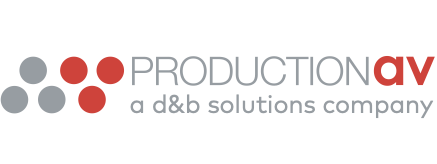Broadcast Video Expo ran from the 17th ot 19th of Feb at Earls Court Two. It was the first time that we have been, and with free tickets, we thought it was worth a look!
With it being aimed at Facilities Houses, Broadcasters and program makers, most of the names you’d expect to see were there- Sony, Panasonic, Arri, Apple, Avid, JVC Thomson/Grass Valley and many more. High Definition is very much here now, with pretty much every camera manufacturer offering a multitude of HD cameras recording to both traditional tapes and tapeless formats.
We went with two aims:
- Get some answers on questions regarding the Panasonic AV-HS400 as well as sussing out alternatives,
- Start planning a route to a Engineered HD camera system.
Panasonic AV-HS400
Surprisingly Panasonic didn’t have any kit on their stand. Luckily for us, one of the UK distributors had the HS400 on theirs, combined with a very helpful chap from Panasonic that pounced on us when we started looking at the unit.
Out of the box it comes with 8 HD/SDI inputs, allowing you to work in either SD or HD format, and by adding input cards with built in scalers it’s possible to take an SD-SDI input and scale it to meet other HD-SDI inputs enabling a mixed format system. Additional input cards with DVI slots let you take in computer graphics for use in keying situations. Combined with the SDI outputs, and the ability to have the HS400 generate a multiviewer style preview, means that it’s possible to cut down on the number of monitors required to run a show. All this comes in a unit that fits within a 19″ rack, and is not much larger the the MX70.
With very low latencies, the AV-HS400 looks to be a great peice of kit, ideal for events where lip sync issues are key, and where a small form factor with full HD processing are required. One rental company already has the unit, and I think we’ll join them in adding it to our rental stock at somepoint soon.
Engineered HD Camera Systems
Production:av was one of the first in the UK to recognise the Barco CLM HD8 as a new standard in high brightness Full HD projection. We’ve matched this with scalers capable of processing Full HD and beyond (in the form of the Screen ProII’s and Presentation Pro II), and source equipment such as Apple iMacs and Final Cut Pro Studio.
The current weak link is the camera systems. Engineered (i.e. cameras with Camera Control cabling (CCZ) and Camera Control units or CCU’s to enable remote control of Black and White Balances, exposure etc) SD-SDI PPU’s and camera systems are readily available, and our choice of camera system due to the quality of the images from cameras such as the Sony D55. It’s possible to do widescreen with these, and through use of scalers it’s possible to scale the image to HD resolutions, but as the pixels were never there in the first place your never going to improve the image.
It is possible to do HD systems using cameras such as the Sony HVR Z1e, but these lack the ability to be remotely engineered, meaning the camera man has to run the exposure as well as framing the shot, and dealing with the focus. Also there are only a few systems out there that have HD/SDI outputs enabling a complete digital workflow.
BVE was good as it gave us a chance to look at the options out there, and start to plot a route through the fog. Hitachi we showing a new camera system with full HD cameras, fibre optic CCZ’s and CCU’s. With camera body and CCU starting at around £25k, it might start to see full HD PPU’s become possible for the corporate and live events market, with out requiring budgets that small african countries would love to have!
So keep an eye on the site, as we will keep you posted with our progress towards a compelte digital workflow.
As for BVE? I definitely think we’ll go again. It’s always useful to be able to see products and their competition in one place, as well as spotting those useful little products that you might have missed otherwise.
